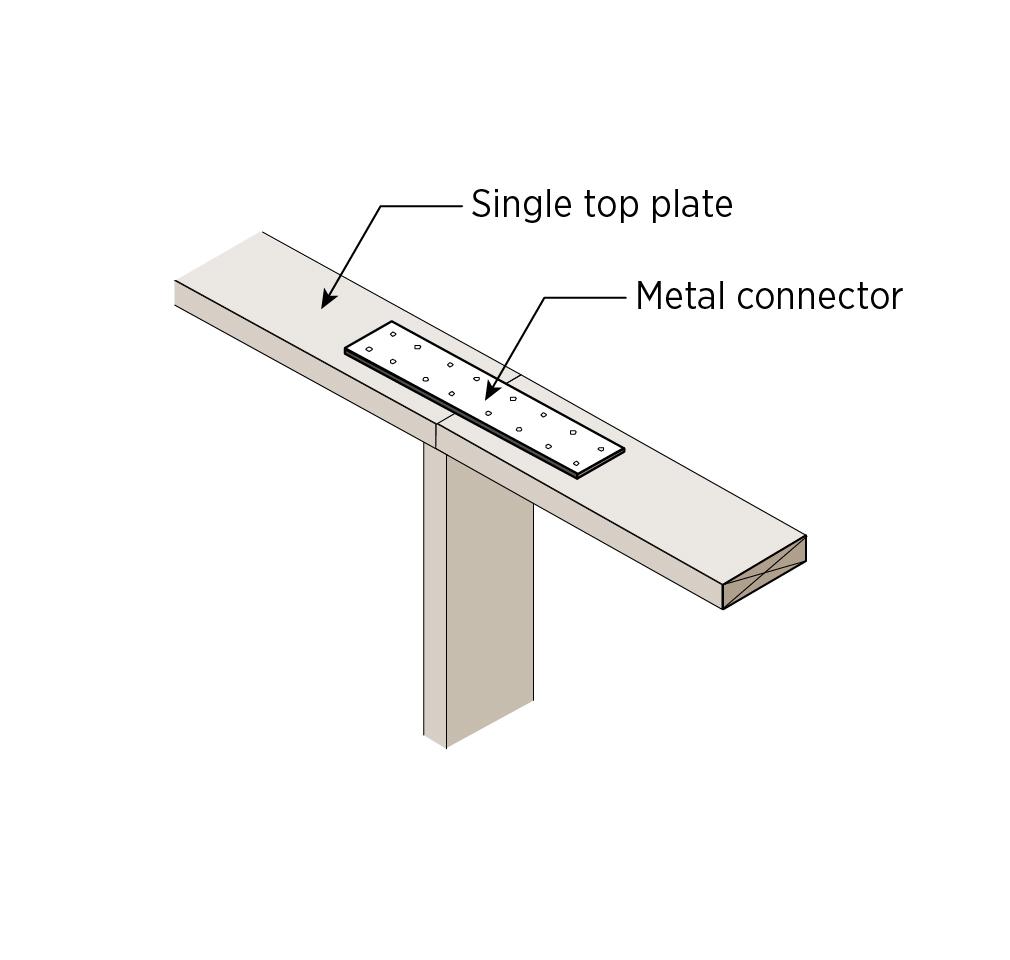
Framing and Windows
Framing: Wall Framing: Advanced Framing and Top Plates
When constructing walls with advanced framing, the top plate should consist of a single plate that’s connected using metal straps or wood splices. This approach helps save material and reduce thermal bridging.
Adding more studs than necessary wastes lumber and reduces the wall’s thermal resistance because the lumber blocks cavity space that could be filled with insulation and because each stud represents a thermal bridge that can transfer heat between the interior and exterior of the building. Traditionally, walls are framed using double top plates. Using a single top plate saves lumber material and reduces thermal bridging without compromising the framing’s strength or integrity.
When designing advanced framed walls, specify single top plates in framing elevations. For an 8-foot wall, don’t purchase standard precut 92.5-inch studs; instead, purchase 8-foot (96-inch) studs and cut them to 94 inches. Connect top plates using either a metal plate or a wood splice.